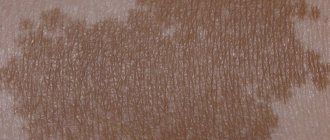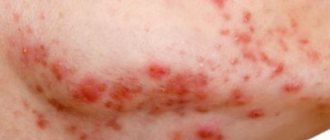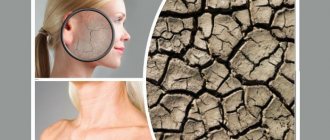General information
Skin is the organ of the human body that occupies the largest area. It performs important functions without which the organism’s existence in the external environment is impossible:
- Protection.
- Selection.
- Reception.
- Thermoregulation.
Immune reactions take place in the skin, water-salt metabolism and respiration, vitamin D synthesis, blood deposition and other important processes from the point of view of life are carried out. When diseases occur, one or more functions are disrupted and structural changes are observed in the affected organ.
As is known, pathological processes in one organ system have characteristic features, knowledge of which will be decisive in providing further assistance. This is when you need a doctor who treats the skin. This is not a generalist, but a “narrow” specialist with the competence to diagnose and treat relevant diseases.
Dermatovenerologist
In clinical practice, skin and venereal (sexually transmitted) diseases are closely related. This is due to the fact that the latter often manifest themselves as changes on the body (for example, syphilis, herpes, papillomatosis). Both disciplines are traditionally considered together, and therefore all dermatologists, in fact, should also be venereologists, but there are also separate professions (especially in highly specialized clinics). The name of the specialty that combines both areas of activity is dermatovenerologist.
Red bumps under the skin
It would seem that the intestines and skin are far from each other and are in no way connected with each other. But digestive problems invariably affect your appearance. Inflammatory bowel lesions are especially pronounced, which can appear as red, painful lumps or nodules. They are located deep in the skin and often appear during periods of exacerbation, along with the development of diarrhea and the appearance of blood in the stool. Rashes that look like red spots without itching or blisters may also appear.
Who is a dermatologist?
is a doctor who specializes in the study, diagnosis and treatment of various diseases
. In practice, dermatologists deal not only with diseases of the skin itself, but also its appendages (
), mucous membranes in contact with the external environment. The nature of skin diseases does not play a decisive role. A dermatologist can treat pathologies caused by infectious, autoimmune or genetic mechanisms. In the process of development of this branch of medicine, it turned out that dermatology was closely related to venereology (
). As a result, the list of pathologies with which a dermatologist works has expanded.
Dermatology as a separate science appeared not so long ago, but the study of skin problems has roots in the deep past. The first medical treatises, which attempt to systematize skin diseases, date back to 1500 BC. Nowadays, dermatologists are one of the most sought-after specialists in medicine. Skin problems appear sooner or later in all people without exception.
A dermatologist's responsibilities include diagnosing and treating various skin diseases. He is the attending physician for patients with such common pathologies as
, fungal diseases of nails and skin. Most dermatologists also treat sexually transmitted diseases.
A dermatologist can work in a hospital setting (dermatological and venereal dispensary) or see patients on an outpatient basis (in a clinic). Patients with serious pathologies requiring intensive treatment are usually admitted to the hospital. There are not many such patients in dermatology. Most of the time, a dermatologist examines patients on an outpatient basis, prescribing treatment at home.
In larger clinics, there may be a clearer division of responsibilities among doctors. For example, some are engaged in the treatment and diagnosis of sexually transmitted diseases, others work only in hospitals, and still others only receive patients. However, this is an administrative division of labor. In principle, every dermatologist can perform any of these duties.
Over the several thousand years that the history of dermatology spans, many remarkable discoveries have been made in this science.
The following are the most interesting facts from this field of medicine:
- The skin is the largest human organ in terms of size and weight. In an adult, its weight ranges between 2.5 and 3 kilograms, and the total area reaches 2 square meters.
- The cells of the surface layer of the skin are constantly renewed. Old cells die and new ones take their place. Complete renewal occurs in about a month, but with some pathologies this process can be accelerated or, conversely, slowed down.
- The capillaries (smallest vessels) of the skin contain a fairly large volume of blood (about 1.5 liters). From here it can be released when necessary, for example after serious bleeding. Blood in the capillaries of the skin gives it its characteristic color.
- The area of an adult's palm is approximately 1–1.5% of the total skin area.
- Over the course of a lifetime, the body produces approximately 18 kg of skin cells.
- In the Middle Ages, there was a category of skin diseases called “touch me not.” All skin diseases were assumed to be highly contagious. Only in the twentieth century were infectious skin diseases that could be transmitted through contact clearly identified.
- The first textbook on dermatology was published in 1572. In it, diseases were divided according to changes in the color and surface of the skin.
Online consultation with doctors
In the modern world, which is developing every day at an incredible speed, sometimes we do not even notice any necessary innovations. So, for our convenience, there is already an online consultation with specialists in various fields of medicine. Most people already know about this and actively use their services. And for those who are reading about this for the first time now or have heard something somewhere but did not understand anything, we note the following information:
- Nowadays, it’s enough to have the Internet at hand, type the coveted words “online consultation with a doctor” into the search bar and a huge number of sites will immediately appear ready to help you.
- In order to see a doctor, you most often need to register, make an “appointment” or get a consultation right there.
- Specialists work around the clock.
- For your convenience, there are 2 types of communication with doctors: through a video conversation (which, of course, is very convenient for a doctor who can clearly see, for example, your rashes with his own eyes);
- via chat (for example, if you are on the road and video dialogue is simply excluded).
Remember, time is the most valuable resource, don’t waste it. And our health is the most valuable thing we have. Don't delay your treatment even for a second!
(
1 ratings, average: 5.00 out of 5)
Allergist
In some cases, the dermatologist refers the patient to related specialists, one of whom is an allergist. A similar need arises in cases where conditions associated with hypersensitivity reactions to certain substances are suspected.
You should consult such a doctor when you suspect urticaria, atopic dermatitis or eczema. To confirm the allergic nature of the disease, the following may be prescribed:
- Skin tests (scarification, application, injection).
- Blood test for antibodies (specific immunoglobulins).
- Specific tests (latex agglutination, lymphocyte transformation).
There will be no doubt about the need to consult an allergist if, in combination with skin manifestations, the patient has signs of conjunctivitis, rhinitis or bronchial asthma. They are also caused by contact with substances, which a “narrow” specialist will help to identify.
Difficulties of the profession
Not everyone knows what the correct name for a skin doctor is. And almost no one understands what difficulties he experiences in his work:
- There are many diseases whose clinical picture is very similar, making diagnosis difficult.
- Many diseases are associated with infections, so the risk of infection for a doctor is very high.
- Pathologies that are asymptomatic go unnoticed for a long time, which is why the patient comes for an appointment when the disease is already advanced.
All of these aspects significantly complicate the work of a specialist.
What types of dermatologists are there?
In principle, dermatologists do not have clearly defined specializations, as is the case with some other specialists. A doctor in this field diagnoses and treats all kinds of diseases of the skin and its appendages. In particular, he may be involved in consultation for some other diseases if there are skin manifestations or symptoms. Therefore, most dermatologist specialists have a broad profile. They may treat patients of different ages or genders.
Skin dermatologist
This specialization does not exist, since skin diseases are the main profile of a dermatologist. The very name of this specialty goes back to the root “derma” - “skin” in ancient Greek. All dermatologist specialists are well versed in various skin problems, and the quality of treatment is determined only by the experience and qualifications of the doctor. If a doctor does not deal with skin diseases, then by definition he is not a dermatologist.
Pediatric dermatologist
This specialization is also usually not highlighted. A dermatologist must be equally knowledgeable about skin conditions affecting patients of all ages. However, there are a number of pathologies that may appear more often in childhood. Any dermatologist should be able to diagnose them, but for treatment he can send the patient to another specialist who has more experience in this area.
All these pathologies are closely related to the age-related development of various skin tissues, and therefore occur exclusively in children. Since their first symptoms and manifestations may resemble other dermatological diseases, they turn to a regular dermatologist. In some cases, a neonatologist, a specialist in diseases of newborn children, may be involved for consultation.
A dermatologist-cosmetologist is a specialized specialist whose main task is not so much the treatment of skin diseases, but rather proper skin care. In principle, a competent specialist can, in any case, suspect and diagnose most pathologies, as well as prescribe the necessary studies. All dermatologists-cosmetologists have a medical degree and graduated from a medical university. Just
is not a doctor and cannot provide qualified assistance in case of various diseases.
A dermatologist-cosmetologist is most often consulted for various skin problems. These are not necessarily independent pathologies, but rather their consequences. As a rule, representatives of this specialty are well acquainted with a wide range of cosmetic products (ointments, creams, gels, etc.) from various manufacturers.
Of course, many of these problems are directly or indirectly related to various disorders in the body. If necessary, the doctor will help identify and eliminate them.
Dermatologist-oncologist
Currently, many different types of skin tumors have been discovered. This explains the emergence of such a science as dermato-oncology. From a medical point of view, this is rather a narrowly focused branch
. However, dermato-oncologists who treat such tumors can also diagnose other skin diseases. This is explained by the fact that many pathologies are so-called “precancerous” diseases, that is, over time, without proper treatment, they can give rise to a cancerous tumor. For example, some types
) can turn into
- a deadly malignant tumor.
A dermatologist-venereologist is a doctor specializing in the diagnosis and treatment of sexually transmitted diseases (
). Many of these pathologies are manifested by a variety of skin symptoms, which is what brought these specialties closer together. Currently, all over the world, dermatovenerological dispensaries and clinics are a full-fledged treatment unit in the healthcare system.
In principle, all these diseases can spread to internal organs, which requires the involvement of other specialists. However, the attending physician usually remains a dermatologist-venereologist.
Many types of allergic reactions can manifest as skin symptoms. It could be
, redness of the skin,
. Dermatologists can, during examination and using diagnostic methods, recognize the allergic nature of the disease. In most cases, they themselves treat such patients.
In principle, there is no narrow specialization “dermatologist-allergist”, since we are talking about a skin disease that is familiar to all specialists in this profile. Dermatologists can also do allergy skin tests themselves and successfully identify allergens (substances that cause allergies). Immunologists and allergists are more specialized specialists.
Dermatologist-trichologist
Trichology is a narrow branch of dermatology that deals with the study of hair (
). A trichologist is essentially a highly specialized dermatologist. Such specialization really exists and is in great demand in modern society.
It is trichologists who study the mechanisms of hair growth, and also study the factors that influence this process. They can determine the most suitable shampoos or other hair care products. Trichologists also perform transplantation (
) hair.
Surgeon-dermatologist
In principle, there is no such specialization in medicine as a dermatologist surgeon. General surgeons or plastic surgeons often perform the most critical interventions in dermatology. They are involved in treatment if necessary, if we are talking about fairly large-scale interventions. Operations such as mole removal,
Can be performed by a regular dermatologist.
Most often, surgeons, dermatologists and oncologists work together to treat various types of skin cancer. In this case, the intervention is not limited to just removing the superficial formation, but requires more radical treatment.
In most cases, the patient himself cannot accurately determine the nature of his disease, so it can be difficult to immediately get to the right specialist. In principle, for any skin problem you just need to contact a dermatologist of any specialization or at least a general practitioner (
). Only they will be able to suspect the correct diagnosis and redirect the patient to a more specialized specialist for qualified assistance.
Many raised moles
Single convex moles on individual parts of the body are quite acceptable if they do not grow and do not change their color and structure. But if they appear frequently and in large numbers in the area of natural folds, especially against the background of pigmentation of the underlying skin, it’s time to check your blood sugar. This is how type 2 diabetes can manifest itself.
We suggest that you familiarize yourself with Erysipelas of the leg, symptoms and diagnosis. Is the disease contagious? Erysipelas on the hand
The growth of these formations can be stimulated by insulin-like growth factor, a special protein that appears in diabetes. This is what affects the skin. Against the background of skin changes, it is also worth paying attention to poor healing of small wounds and abrasions, severe thirst, constant hunger and weight gain, excessive urination, including at night.
Oncologist
Another complication is the question of which doctor treats skin cancer. If any tumor is suspected, dermatologists seek advice from oncologists. It is these specialists who have sufficient competence to diagnose and treat neoplasms (especially malignant ones).
Among traditional studies, the oncologist performs a biopsy (taking a piece of skin) and sends the tissue for histological analysis. Benign formations undergo routine removal, while malignant ones require specific therapy and long-term observation.
What skin diseases does a dermatologist treat?
A dermatologist's diploma allows this specialist to treat any skin-related pathologies. His competence also includes the diagnosis and treatment of many sexually transmitted diseases (
). Thus, the list of diseases that this specialist deals with is very wide. It should be noted that dermatology stands apart from most other medical specialties. A doctor of another profile is unlikely to be able to correctly diagnose skin pathologies due to the frequent similarity of symptoms and manifestations. Below are the most common skin and sexually transmitted diseases treated by dermatologists.
Acne (
) is one of the most common skin problems. A significant number of patients (
) consults a dermatologist precisely about this. As a rule, to eliminate acne, you need to collect quite a lot of information. A dermatologist can prescribe general and biochemical
, ask to check the level of certain
. All this will help determine the cause of acne.
Papillomas
Papillomas are small benign formations that can be located on the skin or on the surface of the mucous membranes. It is currently believed that most papillomas are caused by infection with the human papillomavirus (
). In principle, such formations rarely cause any symptoms (
). However, it is still worth contacting a dermatologist, as he will help determine whether it is really a papilloma and not another type of tumor (
There is quite a large number
– limited skin lesions. A significant part of them are caused by fungal
, but similar processes are sometimes caused by other reasons. Lichen is a typical dermatological disease, and when it is detected, a dermatologist is involved in treatment at all stages of the disease.
Melanoma
Melanoma is a fairly common malignant tumor of the skin that develops from special cells - melanocytes. Due to the presence of dark pigment, melanomas are usually dark in color and can be easily confused with a mole. A dermatologist may suspect or even diagnose melanoma during an examination, but the full treatment of this disease is still carried out by oncologists.
You should consult a dermatologist if you have the following symptoms:
- a mole that has not bothered you before begins to itch or hurt;
- hairs gradually fall out around the formation;
- the mole quickly grows in size;
- ulcers appear on the surface of the mole, which sometimes bleed;
- the mole gradually changes color (often unevenly);
- a small nodule can be felt under the skin.
In all these cases, you should definitely contact a dermatologist, since it may be a malignant degeneration of the mole. In later stages, melanoma is difficult to treat and the risk of death is quite high.
Demodectic mange (mite)
The mite Demodex folliculorum, which lives in hair follicles on human skin, can cause a number of different diseases. It is considered one of the main causes of acne diseases
), rhinophyma,
eye. Discover this
under a microscope. With demodicosis of the eye, doctors can also diagnose the disease -
Itching (scabies)
Itching is a common symptom that is characteristic not only of skin diseases, but also of pathologies from other areas. A competent doctor will never limit himself to just examining a patient with such a problem. Various tests and tests may be required to determine the cause of itching. For example, when
a thorough examination of the skin under a special magnifying glass and scraping is necessary to determine the presence of a mite. If there are no skin lesions, the cause of itching may be various nervous diseases or metabolic disorders of certain substances. For example, in case of illness
yellowing of the skin and itching appear due to the accumulation of pigment in the skin
. To confirm the diagnosis in these cases, the dermatologist will refer the patient to an appropriate specialist (
Psoriasis
is a disease of a presumably autoimmune nature, which in the vast majority of cases affects human skin. The skin becomes inflamed, dries and begins to gradually peel off in small scales. Hence the second name for psoriasis – scaly lichen.
A dermatologist can also diagnose psoriasis, but the full treatment of this disease is often carried out by rheumatologists and specialists in autoimmune pathologies. After determining the type of disease and making a final diagnosis, the patient can easily get by with visiting a dermatologist. His consultation may be necessary to avoid complications.
Herpes lips
Herpes is a viral disease that is very common among the world's population. There are several types of this
. Herpes simplex (
) belongs to the first type. Most often, the disease manifests itself as a typical rash of painful blisters on the lip, but, in principle, the rash can have a different localization (
). If herpes appears, consultation with a dermatologist is not necessary, but is advisable. It will especially help patients who get colds often (
). A specialist will help you choose products that will significantly reduce the frequency of rashes and ease the symptoms of the disease. Unfortunately, at the moment there are no drugs that can remove the virus from the body with one hundred percent probability. Risk of recurrence of rashes if weakened
remains high.
Fungal diseases are one of the most common causes of lesions of the skin and its appendages. There are many types
, which are able to colonize epithelial cells and multiply on them. A dermatologist is a specialist who, in this case, will be involved in the diagnosis and treatment of the disease. There are several ways to identify the pathogen. If necessary, you can send samples to a microbiological laboratory, which within a few days gives an unambiguous conclusion.
The following diseases can be of a fungal nature:
- inflammatory processes on the skin;
- focal hair loss;
- inflammatory processes in the nail bed;
- splitting and destruction of nails;
- some types of lichen.
Hair loss is a natural process in most cases, but can also be a sign of various pathologies. This problem is most often addressed to a trichologist. Based on the nature of hair loss and accompanying symptoms, he can suggest possible causes of this problem. It should be noted that hair loss can occur due to various
, exposure to chemical and physical factors, with some pathologies of the endocrine system. It is possible that after examining the patient and conducting the necessary tests, the trichologist will refer the patient to another specialist for comprehensive treatment.
Allergy
Various allergic reactions often manifest as skin symptoms, including
, redness of the skin, rash. When contacting a dermatologist, this specialist usually easily determines the nature of the disease and can prescribe effective treatment. Most dermatologists can also perform allergy tests on their own to determine what exactly is causing the allergy. However, for future prevention and treatment, patients are usually referred for consultation with an appropriate specialist (
Eczema
Eczema is a skin rash that can have various causes. Among the most common are allergic reactions, exposure to chemical, physical or mechanical factors, and some internal diseases. In case of eczema, a dermatologist will definitely find out exactly what the nature of the inflammatory process is.
There are quite a few different skin problems that can arise due to pathologies or in certain situations. For example, some people experience
, the skin dries out in summer and turns blue in winter. All these problems sometimes indicate certain disorders in the body. A dermatologist will help you understand the mechanisms behind the appearance of these symptoms.
Mole (nevus)
Moles or birthmarks are not a pathology. These are congenital or acquired features of the development of skin cells. In the vast majority of cases, moles do not pose any serious danger. You should definitely consult a doctor only if moles appear or grow too quickly or other symptoms associated with these formations appear.
) or at the request of the patient (
Skin pain
With some diseases, one of the symptoms may be skin soreness in the absence of any visible damage or other signs of illness. For example, with herpes simplex, the skin of the lip may begin to hurt when touched several days before the rash appears. This symptom should not be ignored. It is best to contact a dermatologist, who can guess what the problem is based on the location and nature of the pain.
Tests for sex hormones (testosterone, estrogen)
Excess testosterone can cause excessive sebum production, which means it contributes to breakouts and oily skin. Estrogen affects collagen production, skin hydration, and the rate of its regeneration (healing).
Oksana Chashchina:
“If you are unhappy with the condition of your skin, consult a cosmetologist. He will prescribe tests, focusing on complaints and medical history, and select skincare cosmetics that will locally correct the lack of vitamins and microelements. In addition, cosmetic procedures that stimulate microcirculation, lymphatic drainage and promote healthy skin have a positive effect on the quality of the skin: methods of using one’s own plasma; biorevitalization based on hyaluronic acid; mesotherapy techniques (introduction of vitamin cocktails, amino acid compounds, peptides, microelements and even glutathione, etc.).”
Text: Maria Karimova
Dermatocosmetologist
A skin doctor who combines aspects of aesthetic correction in his practice is called a dermatocosmetologist. His responsibilities include not only treating diseases, but also carrying out a number of procedures:
- Facial massage.
- Masks, wraps, peelings.
- Cleaning (manual, vacuum, laser).
- Mesotherapy, biorevitalization.
- Applying makeup, tattooing.
- Epilation, etc.
A dermatologist with a focus on cosmetology will provide a more comprehensive correction of acne, post-acne, hair loss and other conditions of a medical and aesthetic nature. Usually we are talking about non-invasive or injection correction.
When should I make an appointment for a skin specialist?
Skin diseases are manifested by the following symptoms:
- inflammatory processes of any localization;
- purulent, vesicular, nodular rashes;
- swelling, tissue hyperemia;
- itching, burning, pain in the skin area;
- excessive dryness or oily skin;
- the appearance of external neoplasms, growths, tumors;
- hair loss, brittle nails;
- ulcers, suppuration;
- excessive activity of the sweat glands;
- change in tissue pigmentation.
The appearance of even one of these symptoms is a good reason to make an appointment with a skin doctor.
Symptoms of skin diseases











